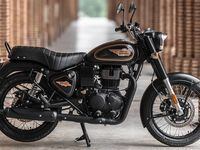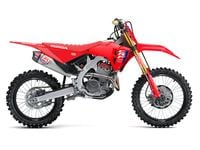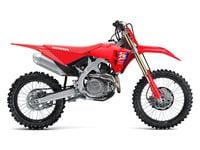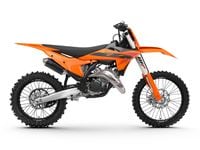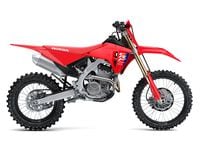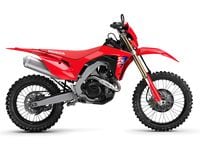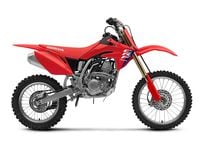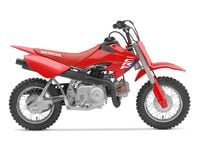Developed using technology gleaned from 12 years of being the spec tire supplier for the World Superbike Championship, the new Pirelli Diablo Rosso III is aimed at the rider who spends most of the time on public roads (with an occasional trackday) and wants superb performance in both dry and wet conditions.
Biggest changes to the Rosso III are new taller profiles for both front and rear tires. The tire circumference is 5-percent taller along with a 7-percent increase in profile radius, which not only provides quicker handling but also a bigger footprint at maximum lean. Progressive belt-stiffening from the center to the shoulder of the tire carcass is intended to offer better feedback in grip and bump compliance. Pirelli claims the new carcass stiffness also contributes to quicker tread warm-up while at the same time providing more consistent tire wear and longer tread life.
New compounds are used, with the front tire utilizing a 100-percent silica compound and the rear sporting a dual-compound construction in a 40/20/40 ratio across the tread (the center compound consists of 70-percent silica while the softer outer shoulder compounds are 100-percent silica). The tread pattern from Pirelli's Diablo Supercorsa DOT race tires is used on the new Rosso III, with some additional grooves for wet-weather performance; nonetheless, the front Rosso III still has 9.5 percent less tread groove area than the old Rosso II, while the rear Rosso III has 7.5 percent less tread groove area.
After SR Associate Editor Michael Gilbert's racetrack review of the Rosso IIIs (which you can find HERE), we were anxious to try them out on public pavement over on this side of the pond. Right off the bat, the new Rosso IIIs exhibited a much quicker steering response than the old Rosso IIs, with turn-in effort much easier. Overall stability despite the quicker steering was excellent, especially in fast transitions where we had to flick the bike from full lean on one side to the other.
Bump compliance was noticeably smoother running straight up over highway imperfections, and while the sidewalls are noticeably stiffer than the Rosso IIs, the increased rigidity helps with feel and feedback rather than making the ride too stiff and chatter-prone when leaned over. We did notice the decrease in feel that Gilbert voiced with the front tire as you approach maximum lean; granted, you have to be riding pretty aggressively for it to occur, and we didn’t suffer any loss of traction.
In fact, overall grip at all lean angles was excellent, with the rear especially demonstrating superb traction characteristics when driving off a corner aggressively. Warm-up is very quick, even during colder conditions, and we surprisingly even got to do some wet-weather testing in Southern California; on rain-slickened pavement, the Rosso IIIs also performed well, with slightly less overall grip than the Rosso IIs according to our memory banks (to be expected considering the smaller amount of tread grooves). And to top it all off, the wear rates of the Rosso IIIs were very good, with plenty of tire still remaining after three months and 2,000 miles of hard riding.
The Pirelli Diablo Rosso III is available in 110/70ZR-17, 120/60ZR-17, and 120/70ZR-17 front sizes and 150/60ZR-17, 160/60ZR-17, 180/55ZR-17, 180/60ZR-17, 190/50ZR-17, 190/55ZR-17, and 200/55ZR-17 rear sizes.
Pirelli Diablo Rosso III
Retail: Front $161.40-$172.35; Rear $212.19-$281.10
pirelli.com
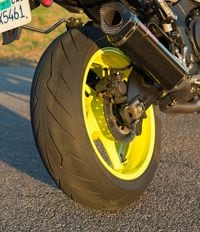

/cloudfront-us-east-1.images.arcpublishing.com/octane/N575KB7BDZDPPJBRLZRG2ANHKI.jpg)
/cloudfront-us-east-1.images.arcpublishing.com/octane/T77HXRXV4NGKDNZODMSEIBRXPE.jpg)
/cloudfront-us-east-1.images.arcpublishing.com/octane/NKMM7V2P3BCSXAV6J56FKK67OU.jpg)
/cloudfront-us-east-1.images.arcpublishing.com/octane/SWQRQV27DNFA7LXGFI7FNFNGOQ.jpg)
/cloudfront-us-east-1.images.arcpublishing.com/octane/GYEXUJBV5JGQLLZNXO7KRVSTEY.jpg)
/cloudfront-us-east-1.images.arcpublishing.com/octane/MCWUSJJVJVG45P7QQG3WOXZR54.jpg)
/cloudfront-us-east-1.images.arcpublishing.com/octane/AJ4EFPH2CRDURDAB5LPEA2V2NE.jpg)
/cloudfront-us-east-1.images.arcpublishing.com/octane/LSDHIL22SZAFFPYLKP5ZXLJSIY.jpg)
/cloudfront-us-east-1.images.arcpublishing.com/octane/SH46HIOX4RELXLXF6AE3SFGH4A.jpg)
/cloudfront-us-east-1.images.arcpublishing.com/octane/JUZ52WFWLJGMNH7PGZNOKP3MUY.jpg)
